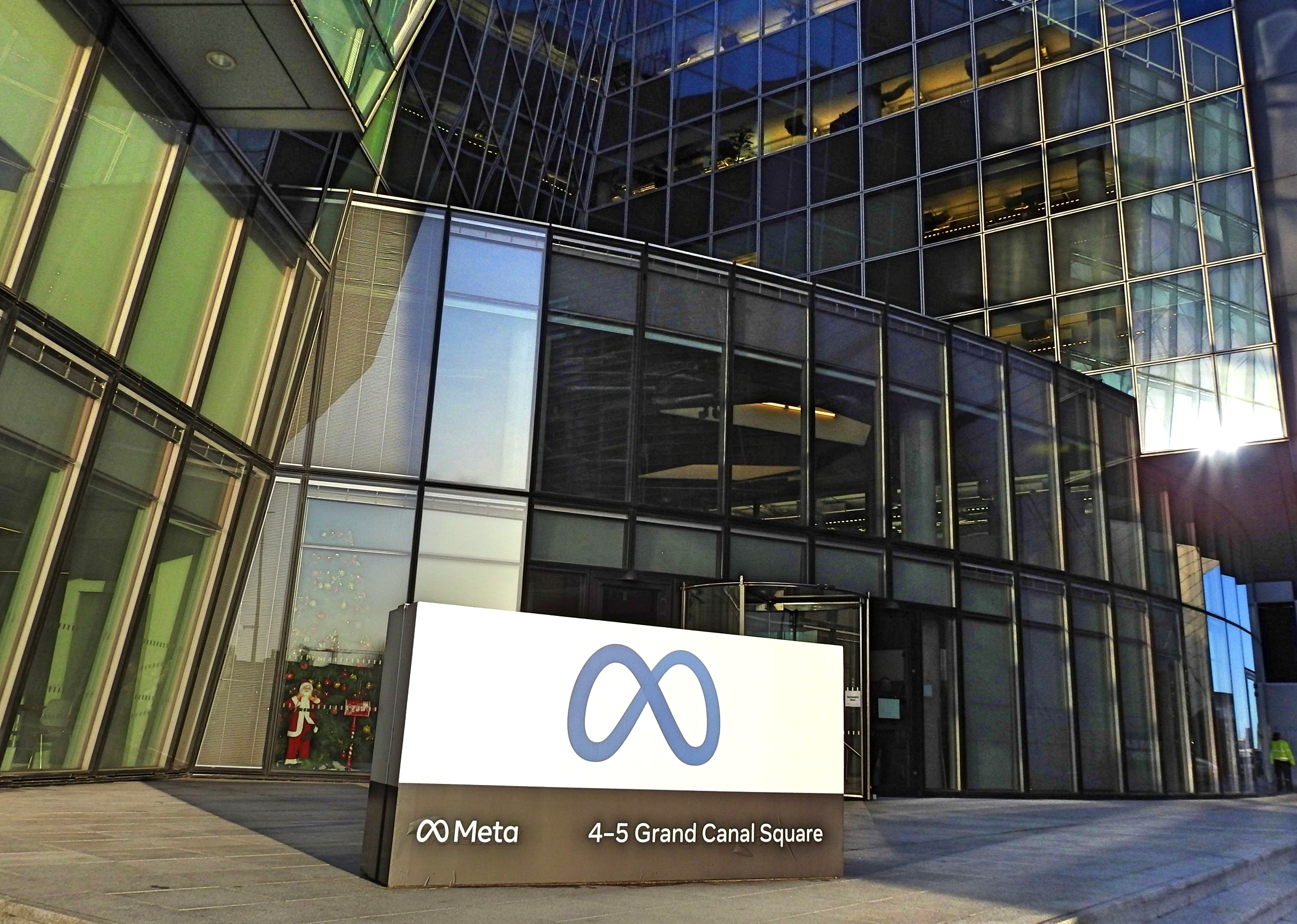An outbound marketing strategy for B2B focuses on reaching out directly to potential clients with targeted efforts to promote your products or services. This approach is designed to connect with decision-makers through channels like cold email campaigns, direct mail, and paid ads. Instead of waiting for prospects to come to you, it ensures your business takes the initiative to start meaningful conversations.
Contrasting Outbound and Inbound Strategies
Inbound strategies rely on drawing prospects in through content and organic visibility, creating opportunities for engagement over time. Outbound strategies are intentional and direct, actively reaching out to high-value prospects. In the B2B space, where decision cycles can be long and competitive, this approach ensures your message is delivered to the right audience without delay.
Key Differences
- Initiation: Outbound marketing strategies actively seek prospects while inbound waits for them to engage.
- Focus: Outbound centers on direct connections, like cold outreach strategies or paid advertising. Inbound relies on attracting interest through long-term engagement tools like blogs or organic search.
- Timing: Outbound is immediate. You can connect with a B2B lead today rather than hoping they find you next quarter.
Both approaches have value, but for B2B companies with long decision cycles and fierce competition, outbound marketing ensures your message isn’t lost in the shuffle.
Why Outbound Marketing Strategy Matters in B2B
B2B isn’t just about selling; it’s about relationships. Outbound marketing allows businesses to target decision-makers directly, whether it’s through a personalized email or a conversation at an industry event. It’s not passive—it’s intentional and structured.
How B2B Companies Benefit
- Targeted Outreach: Whether it’s a cold email campaign or a focused direct mail effort, outbound advertising for businesses is precise.
- Speed to Market: Outbound methods generate immediate visibility, which is critical in industries like SaaS or professional services.
- Relationship Building: A well-timed call or industry event follow-up creates human connection—a critical element in closing B2B deals.
Examples of Outbound Marketing Tactics
Cold Emails
A thoughtfully crafted email sent to the right inbox can open doors. Personalization and concise value propositions make all the difference.
Cold Calls
They’re not outdated. When done well, cold calls remain an effective tool for direct marketing strategies in B2B. It’s about listening as much as speaking.
Direct Mail Campaigns
In a digital age, receiving something tangible can stand out. Whether it’s a product sample or a handwritten note, it’s about connecting on a personal level.
Paid Advertising
Platforms like LinkedIn and Google Ads allow precision targeting, ensuring your business reaches the decision-makers that matter most.
Industry Events
From trade shows to small conferences, industry events are an excellent opportunity to meet potential clients face-to-face and follow up with actionable next steps.
Outbound marketing isn’t about noise—it’s about focus. For B2B companies, it’s the strategy that ensures you’re not just part of the conversation but leading it.
Key Components of an Outbound Marketing Strategy for B2B
Every great strategy begins with clarity. Outbound marketing thrives when the steps are purposeful, and each component supports the larger goal: building meaningful connections with other businesses. From understanding who you’re speaking to to knowing what you’re offering and why—it’s all part of a deliberate process that turns outreach into relationships.
Understanding the Target Audience
The most impactful outreach begins with knowing exactly who you’re talking to. In B2B, this means pinpointing the decision-makers—the people who have the authority to act. But it’s not enough to know their titles. What do they value? What challenges keep them up at night?
How to Build Buyer Personas
- Identify Key Roles: Are they CFOs, procurement managers, or business owners?
- Understand Pain Points: What business problems are they trying to solve?
- Gather Data: Use surveys, industry research, and even direct conversations to refine your personas.
This level of understanding makes outreach personal and intentional. It moves your messaging from “just another email” to something worth their attention.
Crafting the Core Message
Your message should feel like a conversation, not a pitch. B2B outbound sales techniques rely on clarity and relevance—your audience needs to immediately understand how you can help them succeed.
Key Elements of a Strong Message
- Value Proposition: What’s the benefit for them? This isn’t about your product’s features; it’s about the problem it solves.
- Tailored Language: Speak in terms that resonate with their industry. A SaaS company and a manufacturing firm may both need your solution, but they won’t respond to the same phrasing.
- Simplicity: Avoid overcomplicating your message. If they can’t understand it in one read-through, it’s not ready.
Your goal is to create messaging that sparks interest and builds trust, even before the first call or meeting.
Establishing Goals and Metrics
Without clear objectives, outbound efforts can feel scattered. The most successful business-to-business outreach tactics are tied to measurable outcomes. Goals provide focus; metrics offer accountability.
Examples of Outbound Marketing Strategy Objectives
- Lead Generation for B2B: How many new qualified leads do you want to add each month?
- Appointment Setting Strategies: How many meetings or demos should result from your outreach?
- Conversion Rates: What percentage of contacted prospects should turn into opportunities?
Resources Utilized by Marketing Agencies
- CRM (Customer Relationship Management): Platforms like Salesforce or HubSpot track interactions and progress.
- Analytics Software: Tools such as Google Analytics or email tracking programs show which campaigns are resonating and where adjustments are needed.
Goals are the compass that keeps your outbound strategy aligned. Metrics ensure you know when you’re making progress—or when to correct the course.
Common Outbound Marketing Tactics for B2B
Outbound marketing succeeds when the tools match the audience. B2B marketing is not about casting a wide net but connecting with the right people through precise methods. From emails to in-person interactions, every tactic should work toward the same goal: building trust and sparking interest.
Cold Emails
Cold emails are not about volume—they’re about relevance. When done thoughtfully, they can feel less like a pitch and more like an opportunity.
Structuring Effective Emails
- Subject Lines: The first test of any email is whether it gets opened. Short, clear subject lines that hint at value or solve a pain point are more likely to succeed.
- Personalization: Avoid generic greetings. Referencing the recipient’s role, company, or industry challenge shows that the email isn’t just a template but a tailored message.
Automation and Tools
- Platforms like HubSpot or Mailshake can streamline your email outreach, but automation must be used wisely.
- Overly generic sequences can alienate recipients, but when paired with personalization, automation ensures your message reaches the right inboxes efficiently.
Cold Calls
Cold calling is often dismissed as outdated, but its success lies in preparation. A good call doesn’t just interrupt—it adds value.
Preparing for Successful Calls
- Research isn’t optional. Knowing your prospect’s business challenges and goals makes your call feel less intrusive and more collaborative.
- A structured script doesn’t mean reading verbatim. It’s about keeping the conversation on track while allowing room for flexibility.
Handling Common Objections
- Objections like “We’re not interested” or “Now’s not the right time” are inevitable. The key is to respond with curiosity, not defensiveness. Questions like, “What’s your biggest priority right now?” keep the conversation alive and can shift the focus back to potential solutions.
Direct Mail Campaigns
In an inbox-saturated world, direct mail has become a surprising differentiator. A physical piece can grab attention in ways a digital touchpoint cannot.
Types of Direct Mail
- From postcards that highlight specific solutions to promotional items that leave a lasting impression, the format depends on your audience and goal.
Benefits of Physical Outreach in the Digital Age
- Receiving something tangible can feel personal. It shows effort and intent, creating a stronger connection with the recipient.
Paid Advertising
Paid advertising, when targeted, ensures your message appears in front of decision-makers where they’re already looking.
Platforms for B2B Paid Ads
- LinkedIn: Ideal for professional audiences, LinkedIn allows precise targeting based on job title, industry, and company size.
- Google Ads: With keyword targeting, your ad reaches businesses actively searching for solutions like yours.
- Industry-Specific Platforms: Niche platforms often yield higher engagement rates because they focus directly on your target audience.
Retargeting Campaigns
- Prospects rarely convert on the first interaction. Retargeting ads allow you to re-engage users who’ve interacted with your site or earlier campaigns, keeping your brand top of mind.
Networking at Industry Events
Even in a digital-first world, face-to-face connections still hold value. Events provide opportunities to make impressions that no email or call can replicate.
Examples of Industry Events
- Trade shows, conferences, and smaller meetups all offer unique opportunities to meet decision-makers in person.
Leveraging Events for Relationship Building
- Pre-event preparation—researching attendees, scheduling meetings, and planning talking points—sets the stage for meaningful interactions. Following up afterward turns these conversations into actionable opportunities.
Outbound marketing tactics are most effective when used with intention. Each method, from cold outreach to in-person networking, adds a layer of engagement that brings you closer to your audience. The key is precision—knowing where and how to show up so your message resonates.
Benefits of an Outbound Marketing Strategy for B2B Companies
An outbound marketing strategy is about intentional action. It provides businesses with a direct line to potential clients, making it uniquely suited to industries where building relationships and closing deals require a proactive approach. Whether it’s targeting decision-makers or creating opportunities for personal engagement, outbound tactics help B2B companies cut through the noise and connect with those who matter most.
Generating Leads Quickly
Speed is often the deciding factor in business. Outbound marketing is designed to immediately deliver your message to potential clients rather than waiting for them to discover you. Cold email campaigns and paid advertising allow you to generate qualified leads faster, especially in competitive spaces like SaaS or professional services. By focusing on prospects already in the market for your solutions, outbound efforts can fill your pipeline with opportunities while other strategies are still warming up.
Building Direct Relationships
Trust isn’t built through algorithms—it’s built through connections. Outbound marketing facilitates personal interactions, whether through a call, a tailored email, or a conversation at an industry event. These interactions allow businesses to humanize their brand, address pain points directly, and establish credibility. For industries like healthcare B2B sales or manufacturing outreach, these touchpoints are often the difference between being just another vendor and becoming a trusted partner.
Targeting Specific Businesses or Decision-Makers
Precision is the hallmark of outbound marketing. Unlike broader methods that cast a wide net, outbound campaigns focus on reaching the individuals who can say “yes.” Businesses can use targeted prospecting plans to identify high-value accounts and tailor their messaging to resonate with specific roles, such as C-suite executives or procurement managers. This strategic focus improves conversion rates and ensures your efforts are aligned with your most important opportunities.
Outbound marketing offers more than just efficiency—it’s a deliberate way to connect with people, build trust, and make sure your message reaches those who need it.
Challenges of Outbound Marketing in B2B
Outbound marketing delivers direct results, but it comes with its own set of hurdles. B2B businesses must find a way to maintain momentum without losing relevance, navigate decision-makers gatekeepers, and strike a balance between efficiency and personalization. The key is addressing these challenges head-on while staying focused on long-term relationship building.
Maintaining Consistency
Repetition can be a double-edged sword. On one hand, consistent outreach is critical for staying top-of-mind with prospects. On the other, it risks becoming stale or intrusive if not handled carefully. Successful outbound marketing campaigns maintain a steady rhythm while tailoring their messaging to each sales funnel stage. Regularly refreshing templates, leveraging insights from previous interactions, and segmenting audiences prevent outreach fatigue—for both the sender and the recipient.
Addressing Gatekeepers
In B2B, the first person you reach isn’t always the decision-maker. Administrative assistants or middle managers often act as gatekeepers, filtering communication to protect their leaders’ time. Getting past them requires a respectful approach. Establish credibility early by clearly explaining the value you’re bringing to the table. Personalization helps here—mentioning a relevant pain point or referencing the prospect’s role makes it easier for the gatekeeper to see why your message deserves to get through.
Balancing Automation and Personalization
Scaling outbound efforts efficiently means relying on automation tools, but the human element must remain intact. Overly generic messages can damage credibility and alienate prospects. The sweet spot lies in combining automation for broad reach with thoughtful personalization for high-impact touchpoints. For example, using email sequences with customized subject lines or following up with a call tailored to the recipient’s industry ensures campaigns feel personal without becoming overwhelming to manage.
Outbound marketing in B2B thrives when challenges like these are treated as opportunities to refine and strengthen your approach. Each hurdle, from crafting relevant messages to navigating gatekeepers, offers a chance to learn, adapt, and build stronger connections with the businesses you want to serve.
Combining Outbound with Other Strategies
Outbound marketing doesn’t exist in a vacuum. When paired with complementary approaches, it becomes part of a broader strategy designed to connect with prospects at every stage of their journey. By aligning outbound efforts with inbound marketing, leveraging multiple channels, and retargeting engaged prospects, businesses can create a proactive and responsive, cohesive system.
Outbound and Inbound Marketing Strategies Together
Outbound and inbound marketing strategies can work hand in hand, each amplifying the other. Whether through blogs, white papers, or webinars, content marketing can warm up prospects by addressing their pain points and building trust. Outbound tactics, such as cold email campaigns or paid advertising, then step in to reach those who’ve engaged with this content but haven’t yet taken the next step. For example, a prospect who downloads an industry report might receive a follow-up email offering personalized solutions, turning passive interest into active dialogue.
Multi-Channel Campaigns
The modern buyer doesn’t exist in just one space, so neither should your outreach. Multi-channel campaigns blend email, phone calls, direct mail, and paid ads to engage prospects across touchpoints. For example, an initial email introducing your B2B lead generation approach might be supported by a LinkedIn ad targeted at the same audience. A follow-up call reinforces the message, creating a seamless experience that keeps your solution top of mind.
Outbound for Retargeting Existing Leads
Not every lead converts the first time around. Outbound marketing is an effective way to re-engage prospects who’ve interacted with previous campaigns but haven’t committed. Retargeting ads can remind them of your offering, while a direct mail campaign or phone call personalized to their prior activity shows them you understand their needs. For example, a SaaS company might reach out to a prospect who attended a demo but didn’t purchase, offering a limited-time incentive to revisit the conversation.
Combining outbound marketing with other strategies ensures your efforts are consistent and complementary. It’s about creating a system where every interaction builds on the last, guiding prospects through their journey with clarity and intention.
Measuring the Success of an Outbound Marketing Strategy
An outbound marketing strategy is only as strong as the results it delivers. Measuring success ensures your efforts are effective and provides the insights needed to refine and improve. By tracking key metrics and analyzing feedback, businesses can ensure their external marketing efforts are aligned with their goals while identifying opportunities for growth.
Key Metrics to Track
Numbers tell the story of success—or areas for improvement. Metrics like conversion rates and response rates reveal how well your outreach resonates with prospects. For example, a high open rate in cold email campaigns signals strong initial engagement, while a low response rate highlights the need for better call-to-action strategies. Tools such as HubSpot, Salesforce, or Google Analytics allow you to monitor results in real-time, ensuring each active marketing campaign for B2B is optimized for impact. Calculating ROI ensures the resources spent on outbound marketing lead to tangible returns.
Evaluating Feedback
Data is more than numbers—it’s a conversation. Evaluating the responses you receive, whether from email replies, call outcomes, or post-event surveys, provides insights into what your audience values. For instance, consistent questions or objections from prospects might point to a messaging gap, while positive feedback highlights what’s working. Adapting based on these insights ensures your outreach evolves, becoming more relevant and effective with every iteration. Measuring success is about understanding what works and refining your outbound strategy to keep delivering meaningful results.
Driving Success with Outbound Marketing
Outbound marketing is a tool of precision and intention. For B2B companies, it offers the ability to proactively engage with decision-makers, shorten sales cycles, and build relationships that go beyond transactions. By focusing on tailored outreach—whether through cold email campaigns, direct mail, or industry events—businesses can ensure their efforts align with their target audience’s unique challenges and opportunities.
Success lies in structure. A well-designed outbound marketing strategy connects tactics to measurable goals, ensuring every step has a purpose. Each decision shapes the outcome, from identifying high-value prospects to crafting messages that resonate. Businesses that prioritize relevance and consistency will find their outreach efforts met with stronger engagement and trust.
Outbound marketing isn’t just about getting your message heard; it’s about making it matter. When paired with data-driven insights and a clear audience understanding, this approach becomes a bridge to meaningful connections and long-term growth. For B2B organizations, the right strategy doesn’t just open doors—it creates lasting opportunities.
Let’s start with a Digital Marketing Discovery call where we learn about your goals and pain points. From there, we’ll put together a proposal, and we can have you onboarded within a week or less from your call. Be sure to check out our Google Business Profile and visit us on social media as well.










